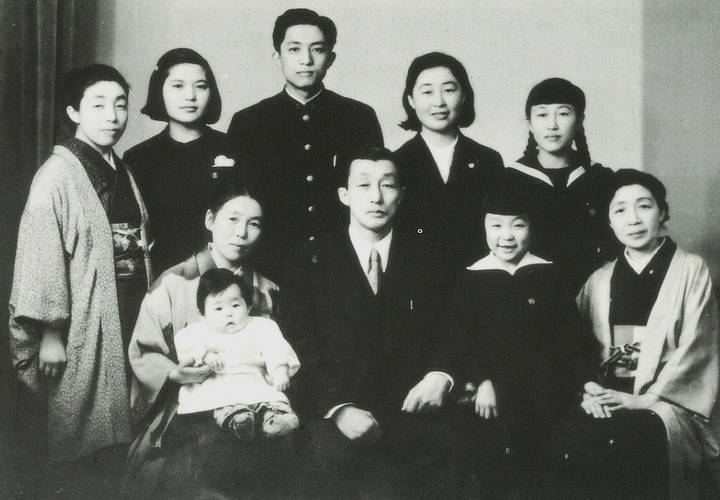In the summer of 1941, Nango Jiro, the second director of the Kodokan, convened a “Research Committee on Techniques when separated at a Distance,” addressing themes such as tai sabaki (body movement) and the application of techniques in response to strikes, kicks, and weapons. Committee members included senior figures from the Kodokan, led by chairman Murakami Kunio sensei. Among them was Ogata Genji sensei, who I mentioned earlier on in this text. The research meetings continued four times until 1944. Tomiki shihan presented his research, including content which he had learned through aikido. On one occasion, he was made to face off against a kendo instructor in front of the committee and demonstrate whether he could actually apply a technique against a committed sword strike. Later, he remarked, “I think I managed to close the distance to the opponent’s hand in about two of the five attempts. But once I controlled the opponent’s hands, that’s our specialist area.”
After the war, Tomiki shihan returned to Japan following more than three years of internment. He dedicated himself to the revival of Kodokan Judo, which had been restricted by GHQ. Afterwards, based at the Waseda University judo club where he served as both director and shihan, he began experimenting with and refining the concept of Competitive Aikido (later, aikido would be adopted as a formal subject and an aikido club was established). During this period, he authored the books, “Introduction to Aikido” (Published 1958) and “New Aikido Textbook” (Published 1964). Before long, aikido clubs were founded at both Seijo University and Kokushikan University, and inter-university matches among the three Tokyo universities began. It is from this time on that I personally witnessed and directly experienced the history of aikido kyogi, or competitive aikido.

In July of 1967, with the support of Mr. Uchiyama Masaharu (President of Showa Real Estate Co., Ltd.), Tomiki shihan established his first dojo dedicated exclusively to the study of aikido, named “Shodokan.” This dojo was originally created by utilizing a section of the company’s office building and had a floor space of 24 tatami mats. Uchiyama Junkichi sensei served as Shodokan’s first full-time instructor, and the renowned judoka Hamano Shohei sensei agreed to act as an official advisor. Hamano sensei had a long standing connection with Tomiki shihan, having been promoted to 5th dan at the Kodokan on the same day (11th January 1928, during the Kodokan’s New Year Kagami Biraki Ceremony). At that time, Hamano sensei was the supervisor of the New Japan Judo Dojo in Osaka.
According to the first Director of Shodokan, Mr. Uchiyama Masaharu, it was Hamano sensei who encouraged Tomiki shihan to set up his base for competitive aikido in the Kansai region of Japan. Hamano sensei told Tomiki shihan, “You should follow the example of Sawada Shojiro, who founded the New National Theater group. He launched it in Kansai first and then spread it nationwide.” It was after this that Tomiki shihan spoke with Mr. Uchiyama about his ideas for a specialist aikido dojo. Mr. Uchiyama responded and proceeded with plans to construct a new Shodokan with a much larger mat area of 76 tatami, acting as Tomiki shihan’s central dojo.